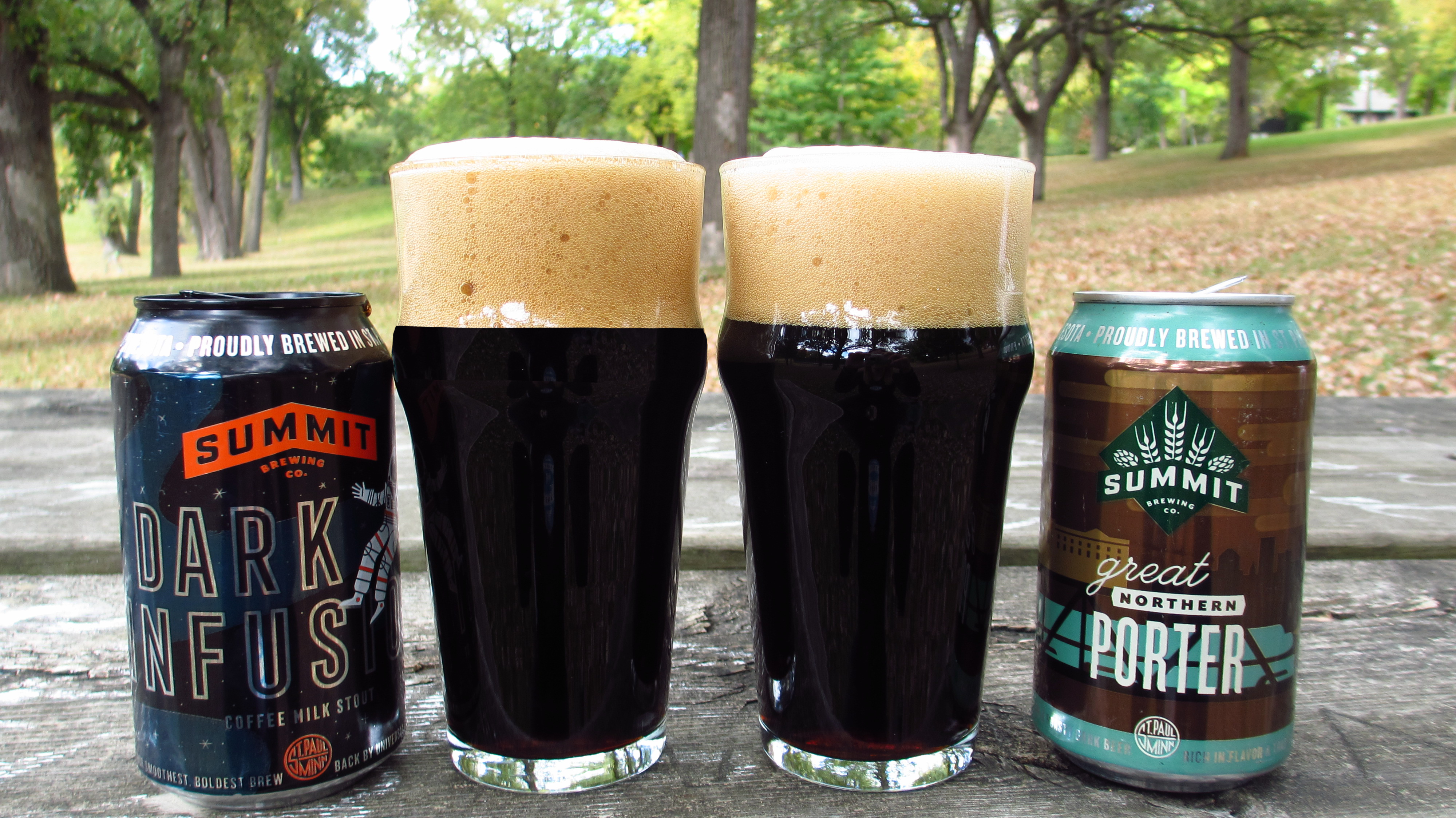The Porter and The Stout: What’s the Difference?
As craft beer drinkers we know, the styles available for our consumption are endless. While there can be great variation between them, some beers seem eerily similar. So much so, that you may just wonder why they aren’t the same.
Well folks, sounds like it’s time for another edition of “What’s the Difference?”
This summer, we looked at best friends Pale Ales and India Pale Ales. Now, as the days shorten and the weather cools, we thought it would be a good time to dive into relatives Porters and Stouts.
So, once again, here’s a little breakdown!
Which Came First?
In this case, that question is a bit harder to answer. It all boils down to terminology…

(credit: Summit Brewing Company)
Technically, the porter came before the stout.
According to All About Beer, porters were born in 1700’s London. At the time, brown beer was the predominant style being brewed and consumed. It is believed this beer came from a brew called “Entire” – a blended beer made of three different ales blended “entirely” at the bar. When it came to brewing there was a basic equation of malt, hopping rate, strength and aging. The porter was born of the brown ale (which was born of “Entire”) when brewers began to age the beer a bit longer. This style grew in popularity among the market porters of Covent Garden and gained the name “porters” because of this.
As porters became more and more popular, and brewing technology increased due to the Industrial Revolution, brewers began to experiment with the equation and make stronger porters. These were considered stout porters, or stouts.
Based on this alone, it appears stouts grew out of porters.
However, that’s not quite true.
At the time, the word “stout” was used to mean strong. So, as Beer Connoisseur shares, it wasn’t out of the question to find pale stouts.
So, while a stout porter was a strong porter, the stout style didn’t truly come into its own until the later nineteenth century. This is when porters began to lose popularity as brewers began to experiment with different malts – moving away from brown malts to the black malts we know today – aging and eventually additives like oysters or lactose into the dark beers.
This is also when the Irish-style Extra Stout Porter became popular. While first brewed in London, porters were shipped to Ireland throughout the 18th century. In Dublin, Irish brewers began to mimic the beer, eventually brewing stronger and stronger recipes. By the 1820’s this stronger porter, referred to as Extra Stout, was the popular style. Soon, the word “extra” was removed, and it became known as “stout.”
Fact Versus Fiction

(credit: Summit Brewing Company)
Fast forward to current times and it’s still as unclear as ever what the difference between these styles is.
Some say it has to do with the malts used in the recipe. The argument here is that porters use a malted barley while stouts are made from unmalted roasted barley. This is where some argue stouts get their bitter, coffee flavor from.
Others claim it has to do with the percentage of malts used. Both use the unmalted roasted barley but stouts take a larger percentage (stout = strong remember?).
However, there isn’t one agreed upon recipe which means neither of these arguments holds that much weight.
Genetic Makeup
It appears it should be as easy as saying that all stouts are porters, but not all porters are stouts
But, while this may be true, the long story short is that there really isn’t much of a difference in their recipes. The true difference comes from how each individual brewery puts their spin on the style – what malts they use or added flavors they choose.
We here at Summit Brewing put our Great Northern Porter and Dark Infusion Coffee Milk Stout in one box (the House Party Variety Pack) so you could try them at the same time and decide for yourself! Let us know what you think!

(credit: Summit Brewing Company)


Leave a Reply